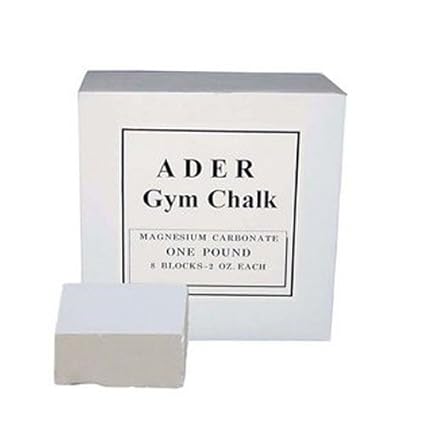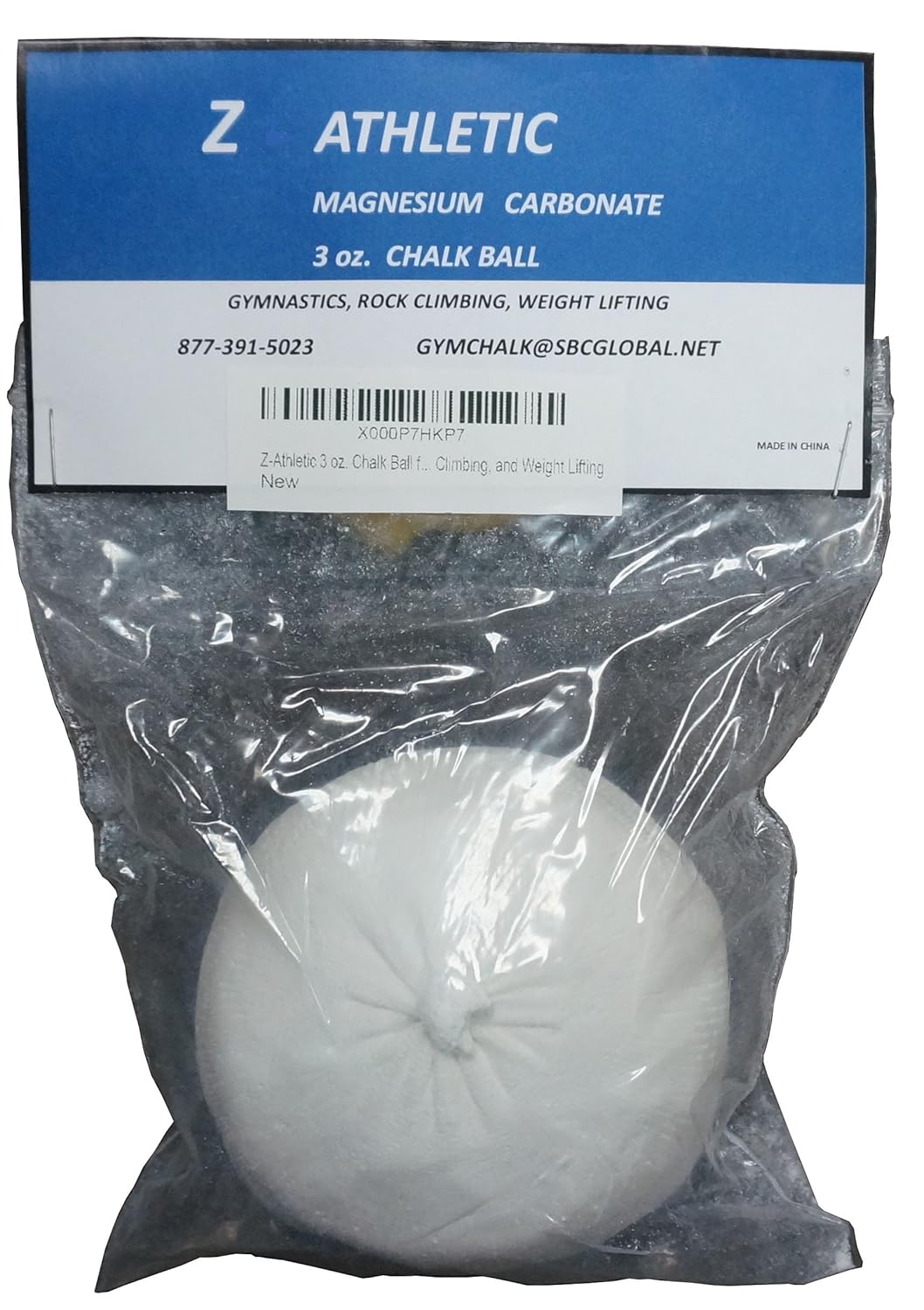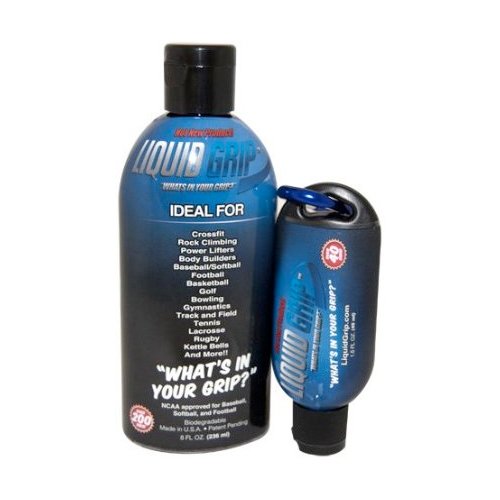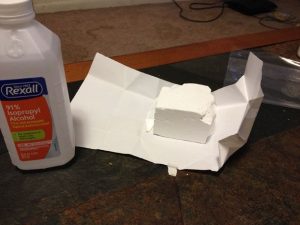In search of the best weightlifting gym chalk with sweaty hands, you’ve come to the right place. Whether you know nothing about chalk, or your gym has restrictions on powdered chalk, I’m here to help.
It’s not rocket science to understand that if your hands perspire too much while late in a workout session to grip and hold a weightlifting bar, dumbbell, pull up bar, or whatever, then you’re leaving gains on the table.
Some may say that using chalk, straps, and other aids is a crutch but if you were otherwise going to be unable to lift the weight then it is in no way shape or form a hindrance – it’s a blessing.
Best Weightlifting, Powerlifting, and Gym Chalk Review Table:
[table id=5 /]
How to Pick the Best Gym Chalk for You
In this section I’ll give a quick overview on the types of chalk and what situations you’d want to use them! Here we’ll show you what the right chalk type is for you.
Types of weightlifting chalk
Because of gym restrictions, there are a few different types of chalks available for use. If you’re lucky, your gym has no restrictions on the use of powdered chalk. It’s the cheapest and most readily available chalk that you can get almost anywhere. Here’s what’s on the list:
- Standard chalk – Often found in block form, this is the gold standard of weightlifting chalk. It keeps your hands dry, your grip tight, and it hardly touches the bank. This is also sometimes available pre-ground into the powder but it’s often more expensive and I prefer a block of chalk to rub over my hands anyways.
- Chalk balls – This is a slightly less messy version of powdered chalk that comes in a cloth ball where you rub it around on your hands and the chalk comes out of the pores. These are handy to carry around and are generally neater than loose chalk but still break the rules of “no chalk in the gym”.
- Liquid chalk – Finally the savior that allows you to secure your gym in the gym rather than resorting to weightlifting straps – liquid chalk. This is a liquid compound that you squirt out into your hands that leaves a grippy residue that performs similarly to regular chalk. Only use this if you have to and don’t have any other way to use chalk in the gym as it’s the most expensive and not as good as regular chalk.
So you have a few options in terms of the best weightlifting gym chalk available, let’s take a look at the brands and specific products that make it happen.
Best Weightlifting Gym Chalk Reviews
So now that you know a little bit about chalk let’s break it down and find the products that really work. All of these products have been tested by Gains Bible disciples through countless hours of research, narrowing it down to the top products, and testing them out in the gym. All of the chalks are made up of Magnesium Carbonate which is the best chalk material, but some of them use it in different ratios with small fillers that differentiate them.
The chalks were assessed on of course grip, moisture reduction, callas protection, mess, and value. Let’s get into it!
ADER Gym Chalk Blocks

In a line: Overall best weightlifting gym chalk
Our testing determined this is the gold standard when it comes to weightlifting chalk. In the deadlift and pull-up tests it performed on par with all of the most expensive chalks and it has the best price of all. You can’t go wrong with picking this box of 8 blocks of chalk that will last you for years. I like to place a block or two in a big Tupperware container to contain the chalk dust and so I have enough for my buddies and myself to last.
GSC Gym Chalk Blocks

In a line: Performs well, but overpriced chalk blocks
This was another extremely popular competitor that made it onto the list. It’s more expensive than the ADER chalk and it’s basically the exact same thing so I would not recommend purchasing this chalk. There’s absolutely no difference between the two and you’re paying almost 25% more – no thanks!
Black Diamond White Gold Loose Chalk

In a line: Best loose gym chalk
This is the top pick when it comes to loose chalk, it’s actually branded as a climbing chalk but it was the best performing one for weightlifting as well. It makes sense though doesn’t it? If the climbers trust it while hanging off a cliff I’m sure it’s suitable for deadlifting. This stuff is a little more expensive than the blocked chalk but if you have a preference for loose chalk there’s nothing wrong with that. It also can be used to refill chalk balls.
Z-Athletic Chalk Ball

In a line: Best weightlifting and gym chalk ball
If you want a chalk ball, this is the one to get. It came recommended from every source coming from gymnasts, climbers, and lifters alike. The convenience of having your chalk in a clean, easy to transport little ball is hard to argue against. This chalk ball holds 3oz of powder and it was less messy than blocks or powder. Take it anywhere and don’t fret the mess. I know it’s technically against the rules for gyms with a chalk ban but it’s so clean that you just might get away with it.
Liquid Grip

In a line: Expensive, but the best non-chalk grip option
This right here Liquid Grip is the best liquid-chalk available out there. It’s not cheap, but if you’re in a pinch and can’t use regular chalk in the gym then check this out. This grip product isn’t even specifically for weight training, but it came out of the woodwork when recommended by baseball players. It dries your hands up, and provides a sticky film that adheres to almost anything (without sticking to it permanently of course). Personally I hate liquid-chalk but if you’re in a pinch go with Liquid Grip.
DIY Liquid Chalk

Since liquid chalk is so expensive and the chalk ban is basically a pandemic in every chain gym out there, I wanted to include this DIY guide on making liquid chalk. It performs pretty well and costs a fraction of the liquid grip. So if you don’t mind gathering up some of the materials and a bit of DIY then check this guide out.
That wraps up the best of the best weight lifting gym chalk reviews – now let’s get into a bit more information on who needs chalk, how to properly chalk up, and how to get the most out of using chalk.
Do I need chalk?
The answer to this question is simple to find out.
IF YOU’VE EVER NOT BEEN ABLE TO PERFORM AN EXERCISE, WHETHER DEADLIFT, PULL-UP, BENCH PRESS, OR ANYTHING DUE TO PERSPIRATION ON THE HANDS OR FAILED GRIP – YOU NEED CHALK
It angers me to think of the gains being lift behind in a lifting session because of something that can be solved by a little chalk. If you can’t use or get chalk, at least use straps. If you were performing an exercise and literally unable to due to your grip then you should be using assistance. Your grip may lag behind but that’s no reason to delay your back, leg, lat and other muscular progress.
There are ways to train your grip alongside using grip assists like chalk and straps that you’ll just have to work through.
How to properly chalk up
This video below by Michael Causer will explain everything you need to know about chalking up for weightlifting.
How to get the most out of using chalk
I personally don’t think you should use chalk every single session, but it is a very useful tool to have in the gym. I recommend using chalk for deadlift or other exercise sets that you have planned but simply can’t complete due to grip strength.
I also recommend your next session, trying to complete that weight again but this time without chalk. Chalk is great, it lets you lift past grip deficiencies but it doesn’t fully strengthen your grip. Use it to complete the lift but be sure to be improving your grip with some of the following exercises:
- Hand grippers – You’ve probably seen them before, the little gripper you squeeze with your hands. Yeah, it does wonders for grip strength so get on it.
- Barbell holds – The title is self explanatory. Set it up like a rack pull and load up the bar, pick it up and hold it there for a set amount of time and sets. I can’t recommend an exact length or weight but play around with it. Some sessions do high weight low time, other sessions do low weight for an eternity. Also alternate your grip – do underhand, do overhand, do thumb-less, do mixed grip. These will all work your hand/forearm/arm muscles/ligaments differently and eliminate your grip weaknesses.
- Farmer’s carries – Use the same variations as the barbell hold guide above, but hold something in each hand and walk a distance with it.
- Dead hangs – Use the pull-up bar and hang there, test your grip. Mix up the grip as suggested above. Try hanging from a towels or use alternate materials to work different grip muscles differently.
Use any or all of these exercises that you can work into your program to improve your grip strength alongside using chalk or other grip aids. This will allow you to eventually catch up your grip strength to the rest of your body – but guess what, chalk is STILL useful when your grip/body strength are even because it gives you more solid control and allows you to push yourself even further.
Best Weightlifting Gym Chalk Conclusion
Hopefully my reviews of the best weightlifting gym chalk and insights on how to make the most out of chalking, and improving you grip help you to improve your lifting. Grip problems don’t have to be devastating so conquer the bar with chalk and improve your strength over time. It’s a race not a marathon!
Wheymen.
Leave a Reply